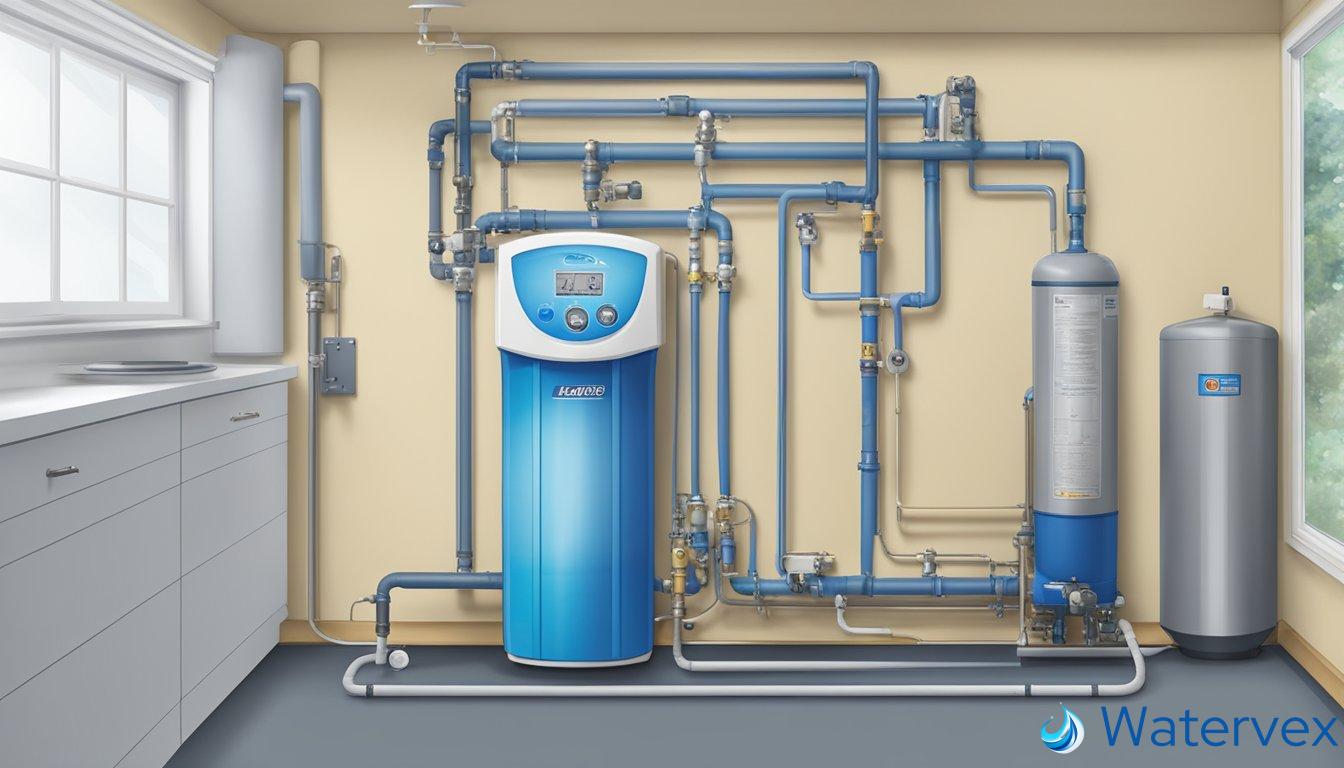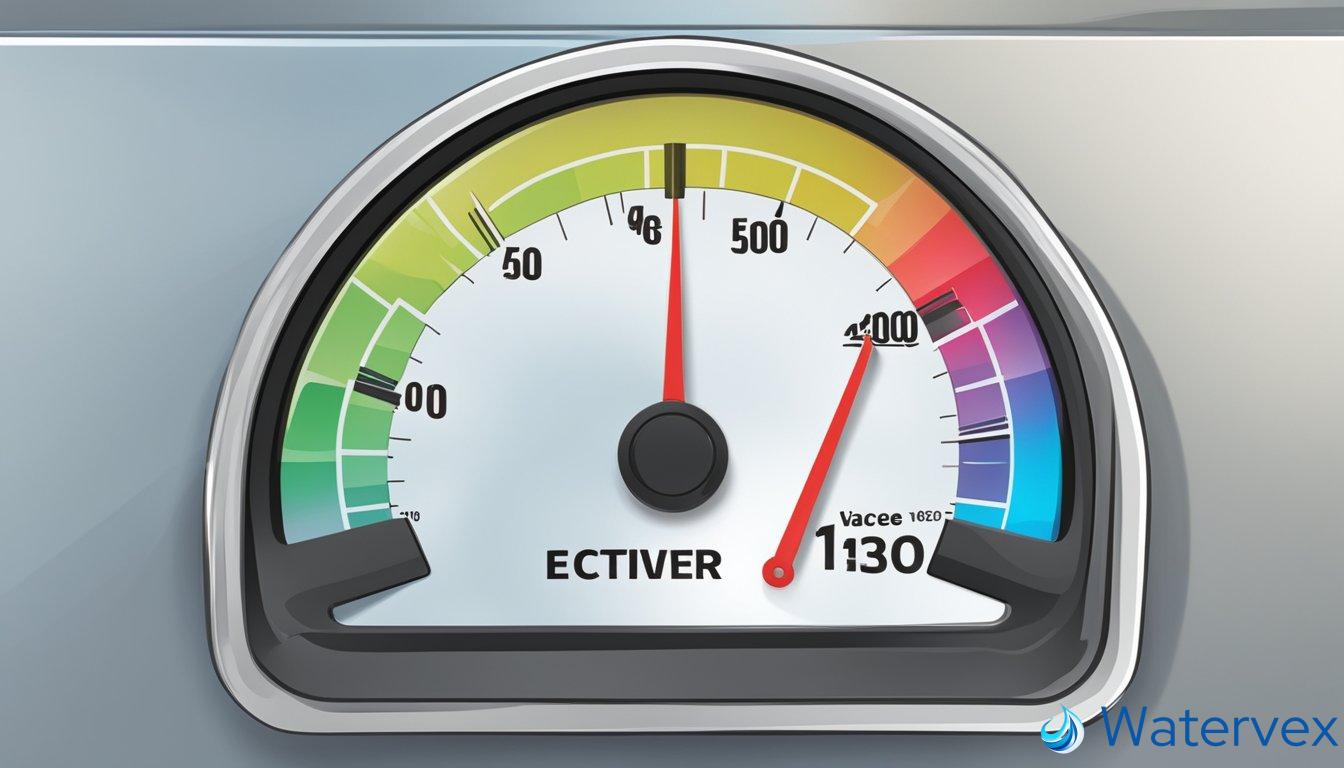Understanding the gallons remaining in your water softener is essential for maintaining soft water supply in your home. When your water softener displays a countdown, it’s indicating the volume of treated water left before it needs to regenerate. This feature allows you to monitor your softener’s capacity and assures that your household maintains a continuous supply of softened water. Dealing with hard water containing high levels of minerals such as calcium, magnesium, and iron can lead to scale buildup and potentially impact your home appliances and plumbing systems.

The longevity of your water softener’s salt supply is crucial, as it directly influences the frequency of regeneration cycles. Factors such as the hardness of your incoming water, daily water consumption, and the size and efficiency of your water softener will determine how often the resin beads are recharged. To ensure the optimal performance of your water softener, it’s important to regularly check and refill the salt levels. This simplicity helps to prevent the inconvenience of unexpected depletion and allows for better planning of maintenance schedules.
Key Takeaways
- Water softeners showcase remaining gallons to help manage regeneration schedules.
- Salt supply and demand are influenced by water usage and hardness levels.
- Regular maintenance of your water softener is vital for continual soft water supply.
Determining Remaining Capacity

When assessing the remaining capacity of your water softener, it’s crucial to understand two specific areas: the status of the resin and brine tank levels, and how regeneration cycles are engaged relative to your water usage.
Assessing Resin and Brine Tank Levels
Resin beads in your water softener’s resin tank play a critical role in the ion exchange process that removes minerals from hard water. To ensure your system is operating effectively, regularly testing the resin’s capacity is necessary. Typically, a water softener’s control valve will have an automatic feature to alert you when the resin requires attention.
In addition to the resin quality, keeping an eye on the brine tank is important, as it houses the brine solution crucial for regenerating the resin beads. Water pressure and flow rate can significantly impact the efficiency of this process, so ensure these are within the recommended range for optimal operation.
Understanding Regeneration Cycles
Your water softener’s regeneration cycle is programmed to be triggered once a specific volume of water has been treated, replenishing the resin’s softening capacity. The system’s water meter tracks your water usage, and once the pre-set capacity is nearing its limit, it prepares to regenerate. Most softeners are set to regenerate at times of low usage, such as the early morning hours, to prevent disruption.
You can adjust the regeneration frequency based on reserve capacity to ensure a continuous supply of soft water. Many modern water softeners also feature an automated setting that learns your family’s water usage patterns, thus only regenerating when necessary. This helps maintain a balance between usage and efficiency, ensuring you always have access to soft water without waste.
Factors Affecting Salt Supply Lifespan

When managing the salt in your water softener, pay close attention to the details that influence how long it lasts. A savvy approach here not only ensures the consistent quality of your softened water but can also lead to cost savings over time.
Impact of Water Hardness
The hardness of your water, often measured in grains per gallon (gpg) or parts per million (ppm), plays a crucial role in the lifespan of your salt supply. Harder water means more minerals to remove—typical culprits being calcium and magnesium. The harder your water, the more sodium ions are needed from the brine solution to exchange with these hardness minerals, thereby depleting your salt more quickly. For instance, water measuring 10 gpg will use salt faster than water at 5 gpg due to the higher concentration of minerals.
Role of Regeneration Frequency and Settings
The regeneration frequency and settings on your water softener are set based on your unique water usage and hardness level. Frequent regeneration cycles mean that the softener must use more salt to recharge the resin beads that capture the hardness minerals. Your control valve, often programmed to trigger regeneration based on water usage or on a timer, needs accurate adjustment. Demand-initiated regeneration systems are more efficient, using only as much salt as needed. Incorrect settings, like regenerating too often, can lead to unnecessary salt use, while rare regenerations might cause salt bridge and salt mushing, hindering proper function. Regular maintenance and cleaning ensure your settings remain optimal, keeping salt consumption in check.
Refilling Salt in Your Softener
Refilling salt in your water softener is crucial for the efficient removal of hard water minerals and ensuring optimal performance. Regular maintenance and accurate salt replenishment are essential to maintain the desired water quality in your home.
Timely Maintenance Tips
To keep your water softener running smoothly, it’s vital to monitor the salt levels regularly. A well-maintained system not only provides softer water but also avoids unnecessary strain on the appliance, extending its lifespan. Here’s how to manage the salt in your softener:
- Check Salt Levels Monthly: Ensure there’s enough salt in the brine tank, but also not too much; overfilling can cause issues.
- Break Up Salt Bridges: Sometimes, a hard crust, known as a salt bridge, forms in the brine tank. Carefully breaking it up allows for proper brine draw.
- Use the Right Type of Salt: Your system may require a specific type of salt, such as solar or evaporated. Using the incorrect type can hinder the regeneration process.
- Clean the Brine Tank Annually: Remove any sediment or debris to prevent clogs in the brine line or issues with the brine valve.
Avoiding Common Salt Refill Mistakes
Mistakes during the salt refill can lead to reduced water quality and efficiency. Here’s what to avoid:
- Avoid using rock salt as it can contain impurities that may clog the softener’s resin.
- Don’t pour salt directly into the brine well; this could block the brine draw.
- Don’t ignore cleanliness: Make sure to clean your hands and tools to prevent introducing bacteria into your system.
- Regularly inspect for a clogged brine line or malfunctioning brine valve to ensure the system regenerates effectively.
Properly refilling the salt in your water softener is not only about pouring in more salt—it’s about understanding the regeneration cycle, knowing your system’s requirements, and performing routine troubleshooting and maintenance. In doing so, you can prevent common issues while optimizing the unit’s function.

